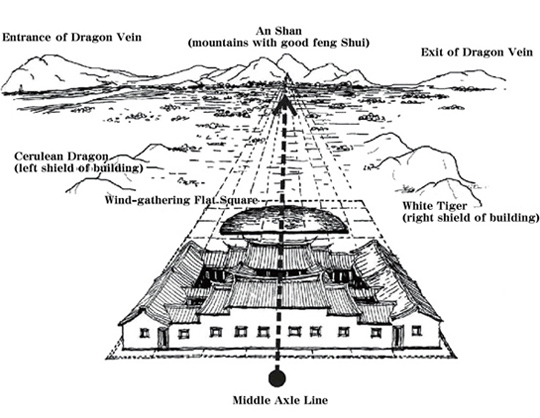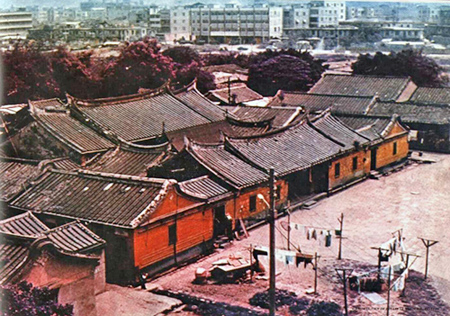History
In the 19th Year of Qianlong Period in Qing Dynasty (in 1754), Lin Chin-Ming (also known as Lin, Yao-Kung), a native from Anxi County of Fujian Province, had led his families to sail across the strait to Taiwan.
Due to being good at business operation, his forth son Lin, Chin-Neng (also known as Lin, Hui-Kung) had opened Rong Tai Company in Bangka. After accumulating his wealth, he had built a big house at where No.141 of Siwei Rd. lies now. The main building of the house was completed in about 48th to 50th Year of Qianlong Period in Qing Dynasty (1783-1785). In the 2nd to 3rd Year of Daoguang Period in Qing Dynasty (1822-1823), the side buildings were completed one after another. In order to remember hometown and think of his origin, Lin, Hui-Kung had named the house as "An Tai", which represented Anxi County and Rong Tai Company. It has been one of the oldest houses existed in Taipei now.
About 200 years ago, Lin An Tai Historical House was built in the orientation toward southwest at an auspicious location in terms of good Feng Shui. It was a very refined 2-partitioned and 5-annex old house with a square.
In 1978, due to the facts that it was rejected to be listed as a historical site and it happen to located within the range for the project to expand Dunhua S. Road. Lin An Tai Historical House was faced with a destiny of being taken apart. Fortunately, under the suggestions and petitions of the scholars and experts, a project of moving it for reconstruction had been formed.
In May 2000, the Lin An Tai Historical House and Museum was opened to the public under the elaborate planning by Department of Civil Affairs, Taipei City Government. After extending the courtyard in 2010, it became parts of exhibition halls in Taipei International Flora Exposition.
Now the mansion is again opened to public as "Lin An Tai Historical House and Museum" among the city's major scenic spots.
The site and architecture are in accordance History with Feng Shui and Taoism.
Once relocated from Siwei Road to Binjiang Park in 1986, the house has been out of its original geography of Feng Shui. In the past, the house had a Toad Peak in front of it as its "Mountain of Feng Shui", which, along with shielding hills in both sides and a wind-gathering flat square in front of the semi-circle pond. Today, to reinstate the Feng Shui landscapes of the old house, an artificial hill, "Gu Zhu Ming Shan", is shaped in front of this flat square and two slightly raised grasslands are used to surround the square.
Apparently﹐the house is of the southern Fujian style architecture, which incorporates courtyards, woods and gardens that are all about being natural and shaped to embody the pristine elements.
It is the pleasure of natural scenery evidenced: amid meandering and undulation are mountains and waters, and trails built of step stones and bizarre rocks erecting. Where the painted walls stand behind the bamboo, pebbles are exposed amid glistering ripples, or whole landscapes are minified, the immense space of house is multifunctional: retreat, appreciation, recreation, culture and education. This makes a backyard in daily living for citizens as well as a choice destination for tourists.

Before Reconstructing


![Taiwan.gov.tw [ open a new window]](/images/egov.png)
